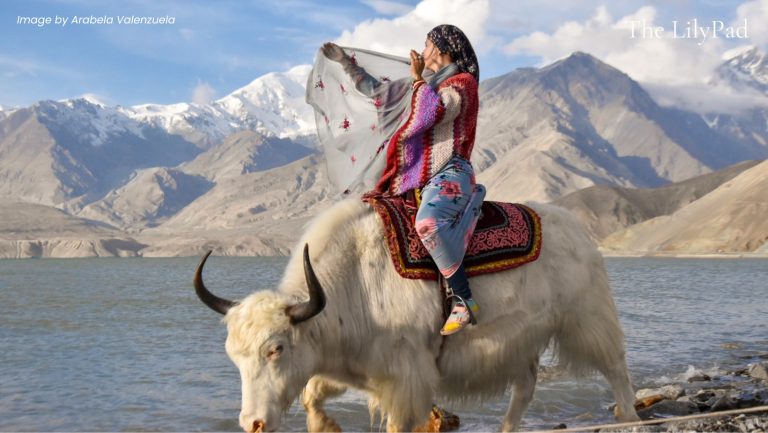Those darn Pamirs!
College is known as a time to do crazy things, and as I prepare for my graduation this May, I reflect on the many crazy experiences that I’ll one day tell my cats and grandcats. But amidst all the craziness, the craziest story of all has got to be my 2023 summer break. Eyeing my last summer break as a DKU student, I had vowed to spend these three months exploring China. So far, so good, until I made the jump from Yunnan to the Northwest. I arrived in Xi’an at the beginning of July, with no hotels or train tickets onwards booked. I had no plans and nowhere else to be until mid August, so being the spontaneous solo traveler that I am, I decided to go with the flow and jump on whatever train had space for the night. This led me to intriguing places, such as Ningxia—where I ate an entire goat leg in one night and a head the next—Inner Mongolia—where I spent the night tenting in the Gobi Desert—Gansu—where I went paragliding over rainbow-colored mountains—and of course, Xinjiang, my favorite place of all. I got into a nasty scooter accident in Turpan, China’s hottest place, which burned my foot and left me unable to walk for a whole month, but that didn’t stop me from traveling.
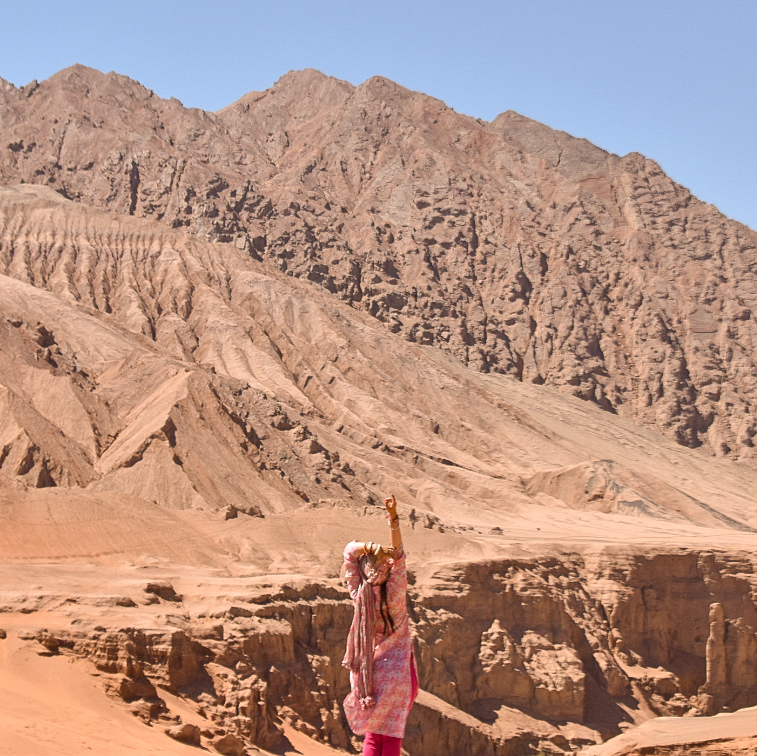
Turpan, Xinjiang, China
I limped all the way to the train station, where I boarded a train bound for Ili, a green piece of paradise in the far northwest of the country. And that’s when I discovered I could re-channel my love for no-seat overnight journeys on Chinese slow trains into a fiery passion for Central Asian land border crossings.
And so, I began the international leg of the trip with a 10-hour direct bus from Ili to Almaty, the largest city in Kazakhstan. Immediately, I was enamored by the unique blend of Soviet history and Central Asian flair. Kazakh people welcomed me with open arms, especially DKU alum Galiya, who waimai’ed me traditional snacks despite being over a thousand kilometers away in Astana.

Kolsay Lake, Kazakhstan
I rode on horseback to pristine blue lakes hidden in the mountains and afterwards ‘showed my gratitude’ to the animal by eating horse meat and milk. Just to clarify, the consumption of horse is part of traditional Kazakh culture. Next, I took a bus to Kyrgyzstan, a country well-known for its nomadic traditions. Unfortunately, I was not able to visit most of the country’s attractions due to my injury, but I had a memorable time circumnavigating the large Issyk Lake by marshrutka (local van) and sleeping in a yurt by the beach. Note that Kyrgyzstan lies thousands of kilometers from the nearest sea, so a beach holiday was certainly out of my expectations. This was also the time to say thanks to DKU student Mentemir, who I ran into in the capital Bishkek and gave me the best possible introduction to the city.
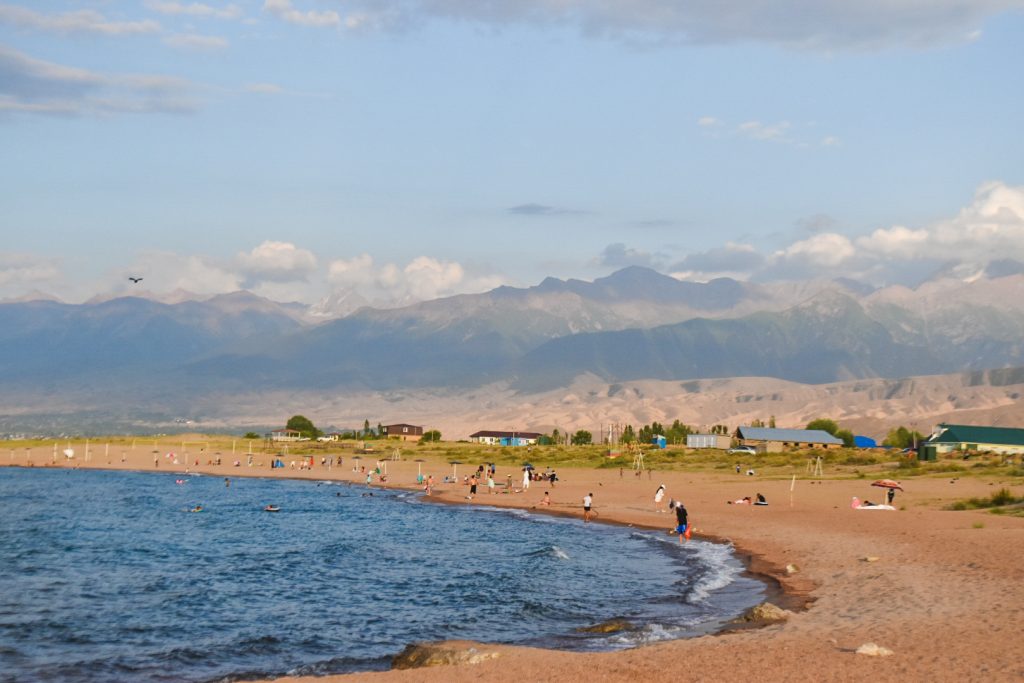
Issyk Kul, Kyrgyzstan
From Kyrgyzstan, I wanted to go to Tajikistan and then cross back into China, since August was nearing and only three weeks remained of my summer break “to explore China”. However, I soon enough found out that due to a heated border dispute, the Tajikistan-Kyrgyzstan border was closed. When I inquired how to get to Tajikistan, I was directed to an overnight bus to Tashkent, Uzbekistan, via Kazakhstan, from where I was supposed to cross into Tajikistan. And so, I inadvertently ended up in yet another country that had been on my bucket list since forever. When I woke up from an early morning nap at the bus terminal in Tashkent, I realized that merely transiting through Uzbekistan would do the country a huge injustice, so I went on to explore the architectural marvels of Tashkent, Bukhara and Samarkand.

Bukhara, Uzbekistan

Samarkand, Uzbekistan
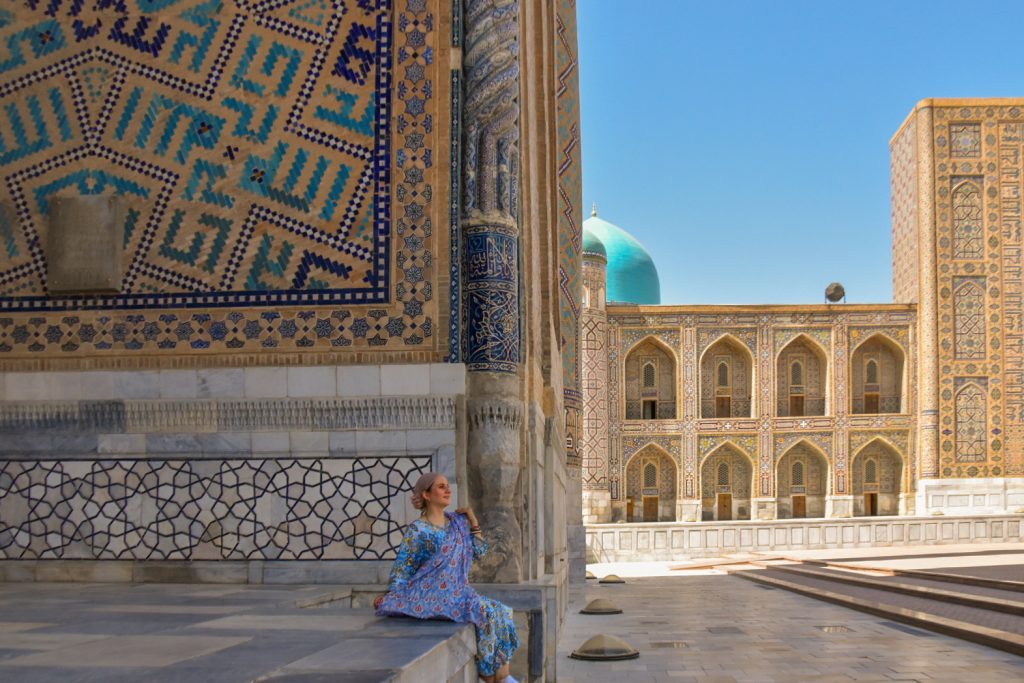
Samarkand, Uzbekistan
Although the Timurid-era mosques and madrasas are a world wonder in themselves, what stood out to me about Uzbekistan was the people. I will never forget how despite the language barrier, imams and their families welcomed me into their mosques and hosted me, prayed for me, and called their nieces and nephews to show me around. In Samarkand, I fell from the staircase in a fancy restaurant and the staff not only took off from work to take me to the hospital but even paid my medical bills, gave me medicine, and dropped me back off at my hostel. Not to mention the market vendors who gifted me medicinal herbs to improve my (nonexistent) husband’s potency because they felt so sorry that I was 22 years old and still childless.
Following a memorable few days in Uzbekistan, I hailed a taxi to take me from Samarkand to the nearby Tajik border. However, my time to explore Tajikistan had not yet come, because my heart told me I still had time for a quick excursion down south. Hence, I ended up spending a week in Afghanistan, a country I really didn’t expect to visit this summer! As I traveled on bumpy dust roads from Mazar-e-Sharif to Kabul, Ghazni to Bamyan, and back to Kunduz, I could not ignore the traces of war and poverty that had befallen the land. Unrest which had plagued the Afghan people for many decades meant that most Afghans grew up in chaos. And while the Taliban at checkpoints gifted me flowers and proposed marriage, local women complained to me how under the current government, they were not allowed to work most jobs or attain a secondary education simply because of their gender.
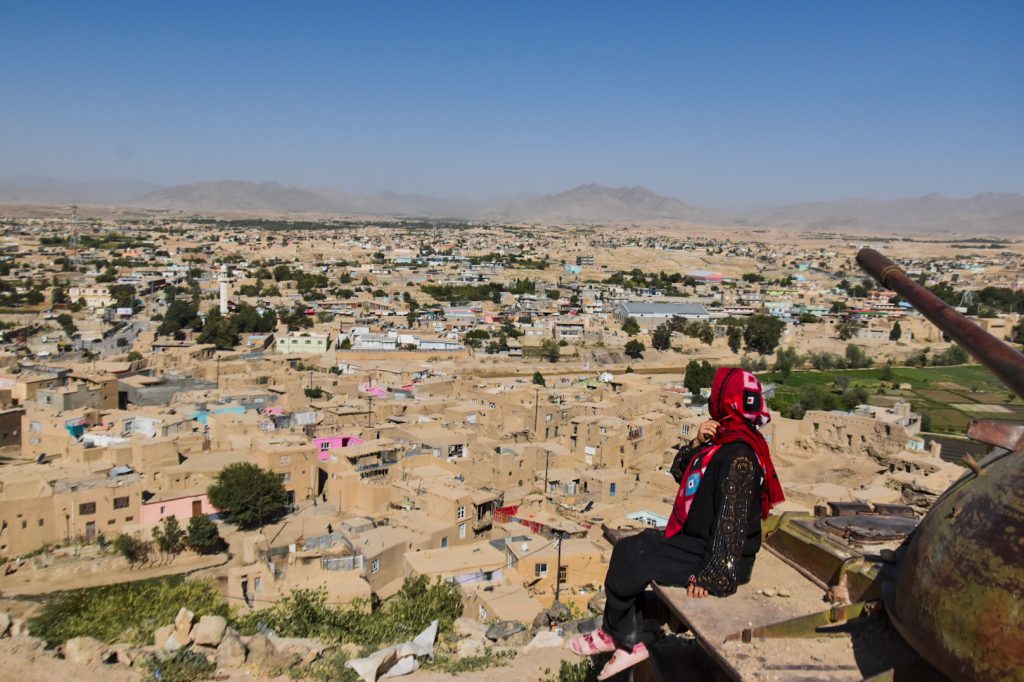
Ghazni, Afghanistan
On the other hand, I was told that since the 2021 Taliban takeover, the security situation was as stable as it had not been in decades, allowing overseas Afghans who had never been to their motherland to finally visit. I consider myself extremely fortunate that I was able to explore Afghanistan’s ancient shrines and temples, bustling bazaars, and the clear blue water of Band-e-Amir in safety and as a single woman, especially because only weeks later, the Taliban decided to ban women from visiting some of these touristic places.
After leaving behind beautiful Afghanistan, I returned to Tajikistan, not suspecting that the real adventure still lay ahead of me. With only a few days left before classes started, my goal was to reach China as soon as possible. Therefore, I got up at 4am and joined one of the numerous jeeps headed for Pamir mountains. After driving directly along the Afghan border for twenty hours, our jeep finally reached Khorog, the capital of Gorno Badakhshan Autonomous Oblast. However, when I arrived in the mountains, I was informed that the Chinese border would be closed for the entire weekend. After spending a night in the same bed as my host family, I was told to start heading towards the Chinese border, since the journey would be “difficult”. There were two ways to reach Murghab, the closest town to the border: one via the main road and another, more scenic route via the Wakhan Valley. I chose the latter, which turned out to be a huge mistake, because the passenger jeep traveled no further than a certain village, after which the region became so remote that there was no more demand. I spent the weekend hiking in flip flops all the way to a hot spring, where local women taught me how to bathe myself the Pamiri way.
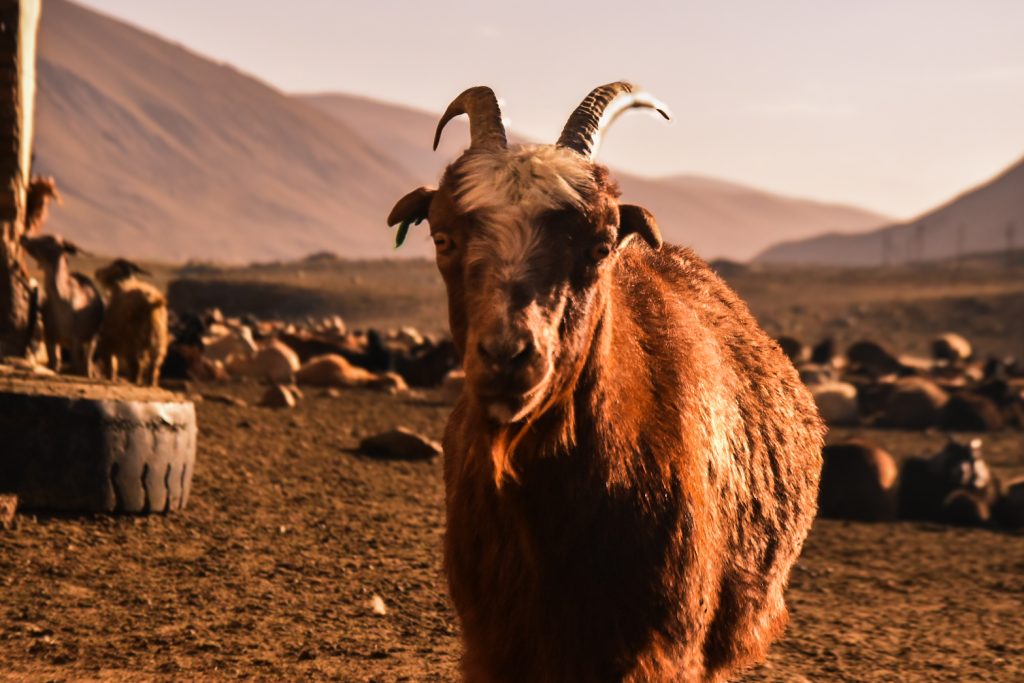
Pamir Mountains, Tajikistan
Along the way, I stopped counting how many people invited me into their cottage homes and offered me the local specialty, sheer chai – salty milk tea with bread. An okay-ish snack, but quite repetitive for a meal. Soon enough, I gave up on waiting for transportation to Murghab and decided to return to Khorog and join a jeep along the main road. However, when I returned to Khorog, I was still unable to find transportation to the very remote region near the Chinese border. Hence, I decided to sacrifice all my savings and hire a private jeep to Murghab. The driver, who was initially unwilling to start this tough journey, and I traveled for three whole days across barren highlands until we reached the small mountain settlement at an elevation of over 4000 meters. After having had sheer chai three times a day for a whole week, I felt relieved when I stepped out of the car and a cow head rolled in front of my feet – finally some meat, even though spices were unheard of in this part of the country. Since my savings were insufficient to pay for the gas for the rest of the journey and there were no ATMs in all of Gorno Badakhshan, my only option to get to the border from Murghab was to wake up before dawn and hitchhike on a truck headed for the border. And so, I experienced Pamiri hospitality until the very end.
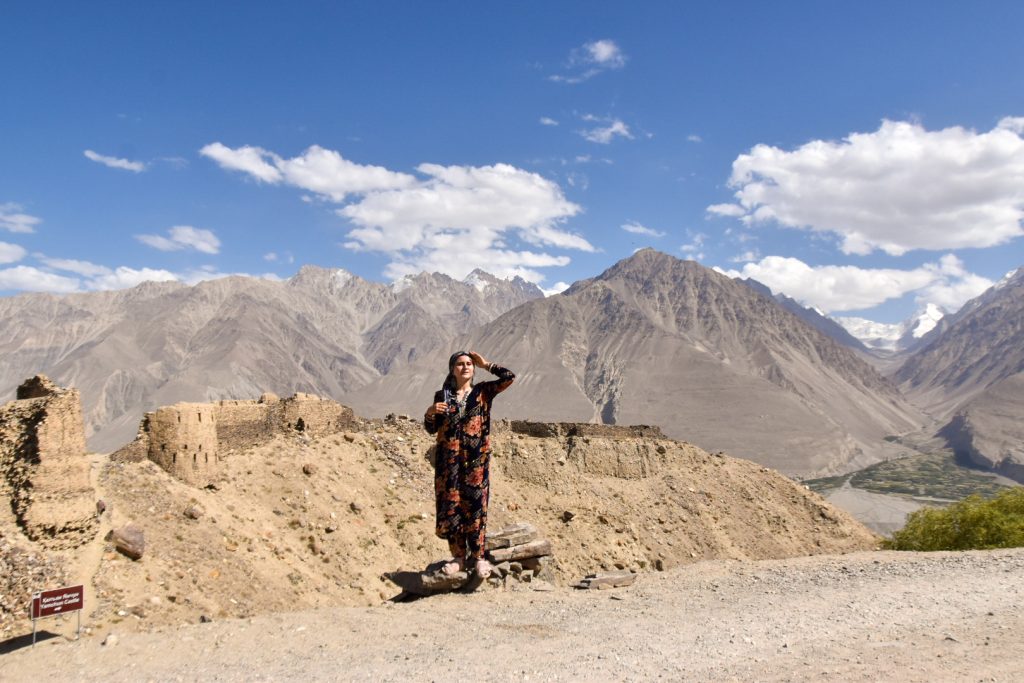
Pamir Mountains, Tajikistan
Unfortunately, the welcoming to China was slightly less hospitable when I was searched and interrogated at the border for five hours. When I finally cleared immigration, there were no more trucks left to hitchhike on, and I was only able to make it to the nearest city by the grace of a local Kyrgyz woman, who spoke no Chinese but felt so compassionate that she drove me 250 kilometers in her private car. On the way, we crossed snow-capped mountains and majestic alpine lakes, where I rode a yak and had tea in yurts. We said our goodbyes in Kashgar, one of Xinjiang’s most famous historical cities, where I had the chance to experience the beauty of Uyghur culture for one more day before I returned to Jiangsu. By then, I had already missed a week of classes, so I had no option but to fly to Shanghai instead of finishing my journey overland – nonetheless, an 8-hour flight. The taxi driver who picked me up at Hongqiao Airport mistook me as a local from Xinjiang, an assumption I felt too tired to correct, so I just told him I was from Kashgar before I dozed off. That’s when I realized that Central Asia had really gotten to me, in a good way. And if something good got to me, then perhaps missing a week of classes for it wasn’t the end of the world.
So yeah, next time you’re late for class and need an excuse, have you considered blaming the Tajik mountains?

